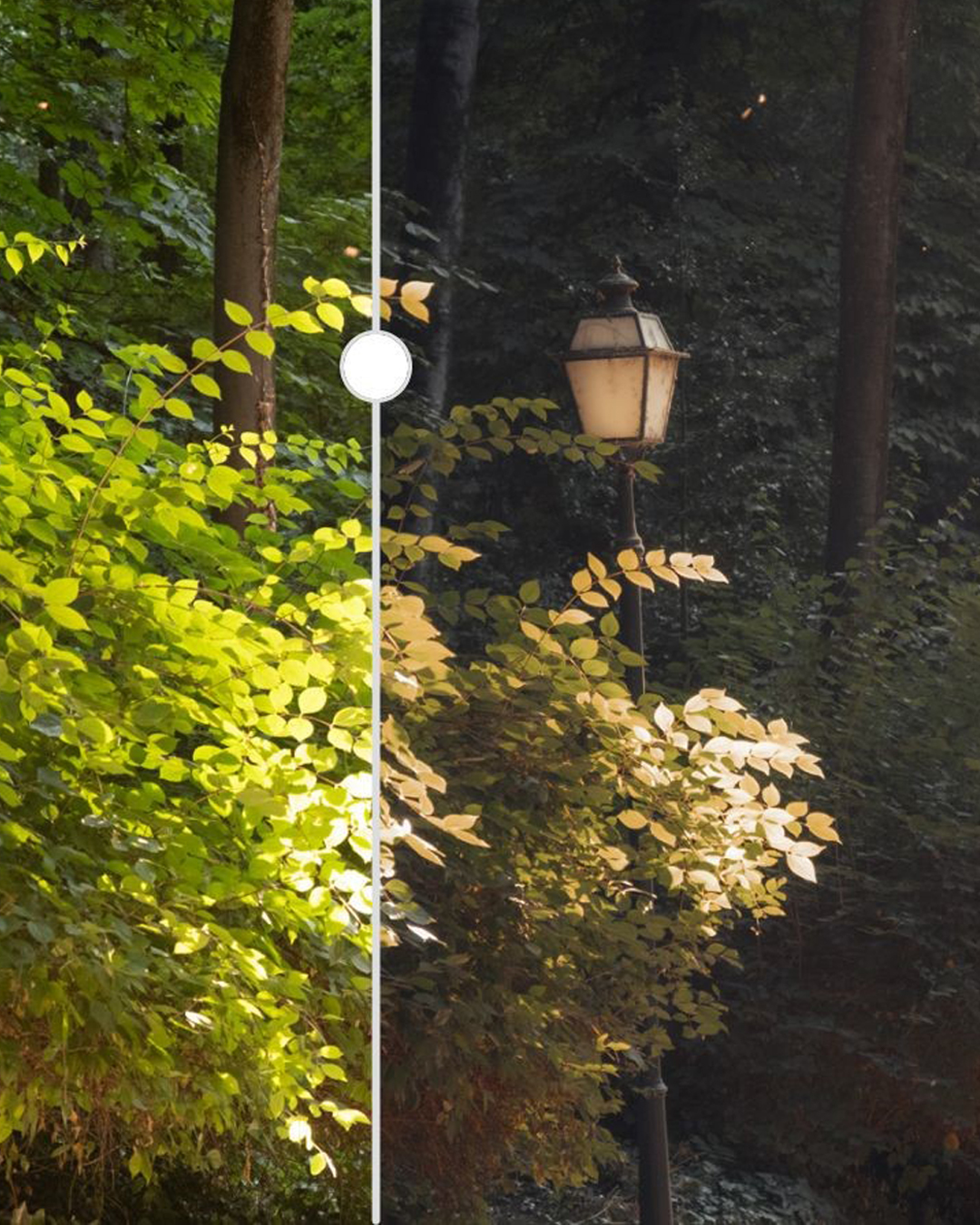*Ce contenu est disponible qu’en anglais pour le moment
You know when you look at an image and you can feel what that dish tastes like, what that fragrance smells like, the calm you feel in that place?

Well, today we are talking about a part of the process that makes that image so evocative, that it transports you and immerses you instantly in its own world.
Something that also serves to be consistent, recognisable at a glance and have a strong visual identity.
For a brand, it is a great ally in visually reflecting its attributes, its personality and arousing the right emotions in its audience.
Obviously in photography all stages of the process are important and essential, from the preparation before, to the moment of capturing the image and after. But today I am going to focus on the post production, which plays a crucial role.
The image, as it comes out of the camera, is an open world of possibilities.
When we get it raw, no matter how well made it is, it is probably still not capable of adequately conveying the feelings or the atmosphere of that particular time and place.
It is the editing process that makes the image all that it can be. It comes to enhance it so that it manages to reflect exactly what we are looking for.
ONE IMAGE, MANY POSSIBILITIES
Photographic editing is one of the most stimulating elements in the construction of the visual message, allowing you to take your photograph to another level.
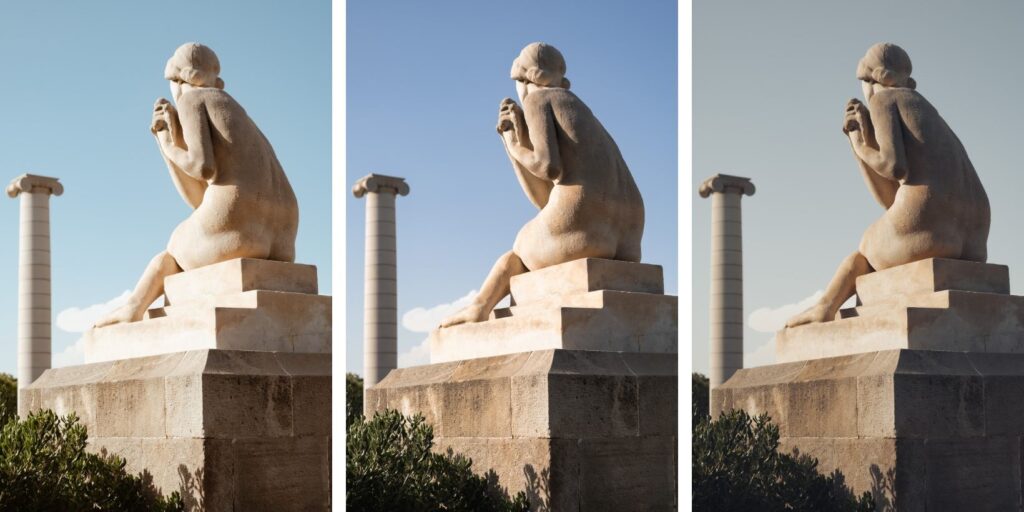
I remember that in my Art High School days (more than 15 years ago) it was considered ‘bad’ because it altered photography and, therefore, reality. The possibilities of programmes such as Photoshop, which made it possible to completely change the image, were frightening. And when it was finally integrated, AI appeared to scare us more than Photoshop. That’s who we are.
However, the belief that photography is objective was dismantled a long time ago. First, because there is always a (subjective) person behind the camera; second, because the manufacturers themselves manage colour in different ways (they have different sensor profiles or processing algorithms) so is Canon’s green more objective than Fujifilm’s?
So, what photographic editing allows is to make visible elements that we do not initially see, to enhance the image to evoke atmospheres, transmit sensations or awaken emotions that appeal to our senses and give us that aesthetic-visual enjoyment.
It also allows us to create coherence between different images, within a project or as a brand. Consistency in photo editing makes your brand recognisable at a glance. The adjustments you apply, your type of editing, are part of your visual identity.

In company style manuals, colour palettes and typographies are never lacking, but photographic style and graphic resources are often forgotten.
Well, the photographic style says a lot about the brand or product. It tells us whether the brand is dynamic and innovative, or natural and sustainable. If it conveys energy and inspiration, or relaxation and well-being.
During the process of photo development we can apply the theory of colours (related to emotions), choose between warm or cold, saturated, soft etc.
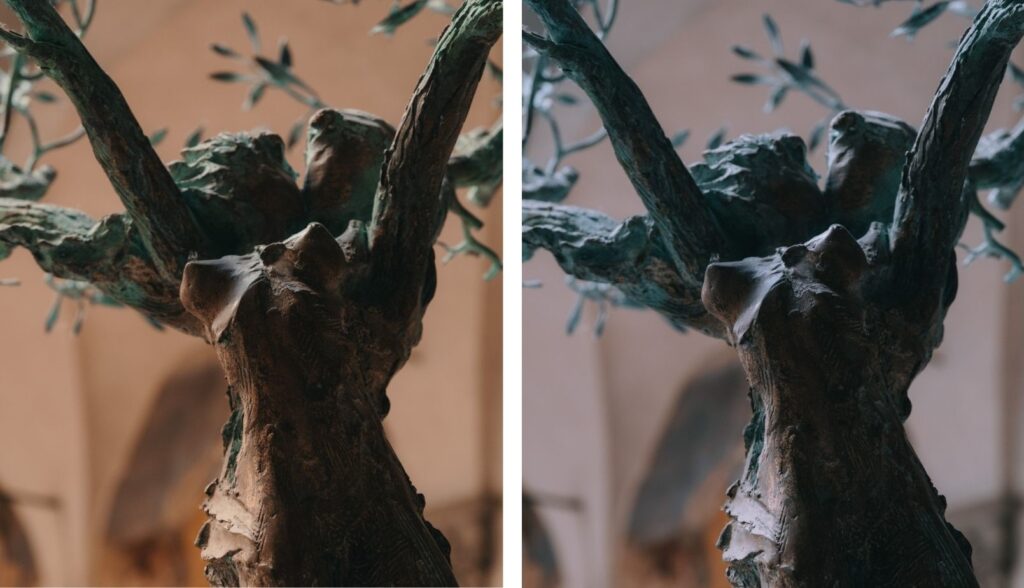
In its origins, analogue photography contemplated these adjustments as just another part of the photographic process to reach the final image. Curiously, it was done in the lab using similar techniques to digital (filters, masks…), so I’d better start there, at the beginning.
Of course, you can skip it and go straight to the point with digital. I just wonder: if major brands like Vogue collaborate with photographers who prefer film over digital and countless filters have come out trying to copy the analogue style, why is that?
THE MAGIC OF DEVELOPING THE IMAGE IN ANALOGUE
REVEAL, FROM LAT. REVELĀRE
tr. to discover or reveal the unknown or secret.
tr. to make visible the image printed on the photographic plate or film.
Magic, yes, because when you first see an image appear out of nowhere on white paper that is what it looks like. The photograph is revealed, i.e. the latent image becomes the visible image.
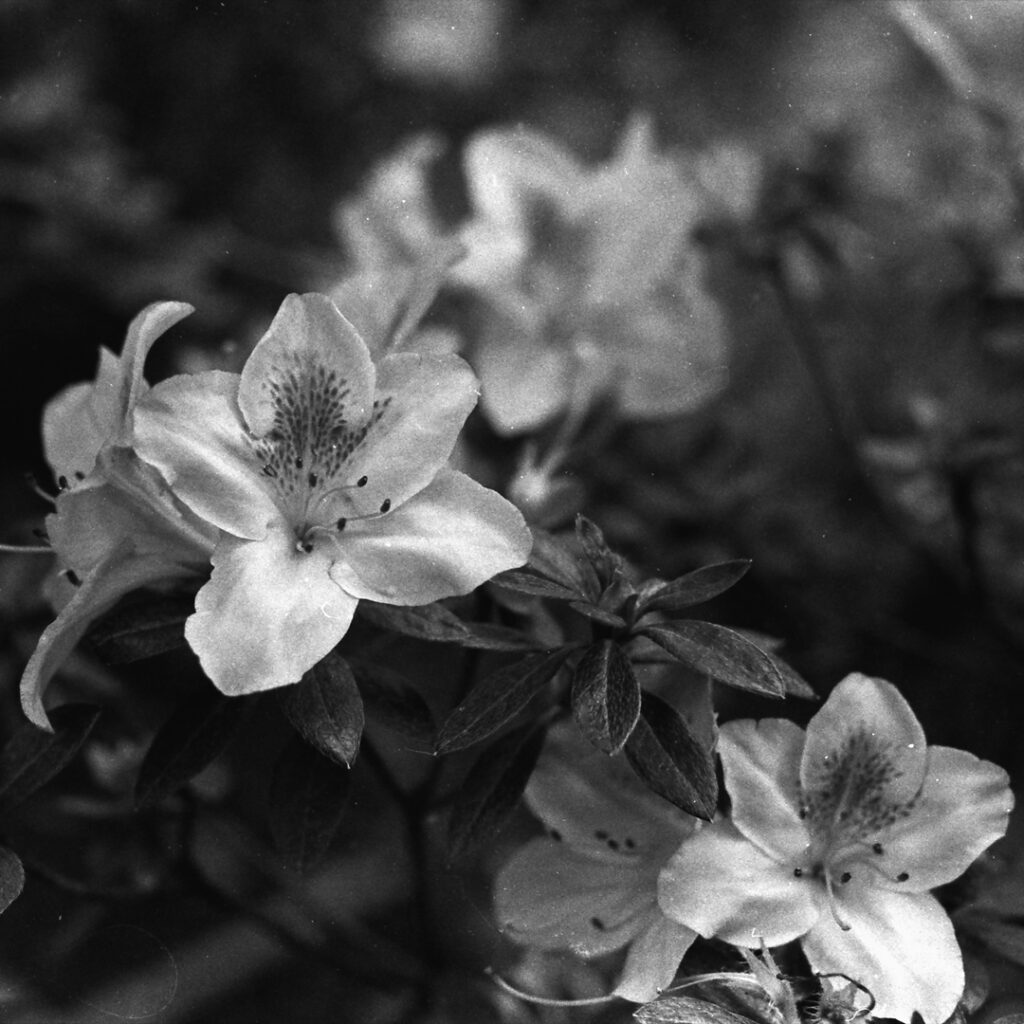
How does this happen? In the analogue process, what captures the image is the photosensitive emulsion of the film due to the effect of light on the silver salts contained in the emulsion.
Yes, it is incredibly poetic that magic happens thanks to light and silver salts. I would like to take this opportunity to tell you a curious fact: it is for this reason that in France it is called ‘argentique’ (argent = silver) photography instead of analogue.
And also to remind you that the word photography means to write or draw with light, as it derives from the Greek phōs = light and graf = to draw, to write.
Well, this image, however, we cannot see it, it is hidden. It is during the process of developing with chemicals (or more recently with organic products, which I tell you about in this article), that the image becomes visible.
It becomes visible, but it is very tiny and inverted: these are the negatives.
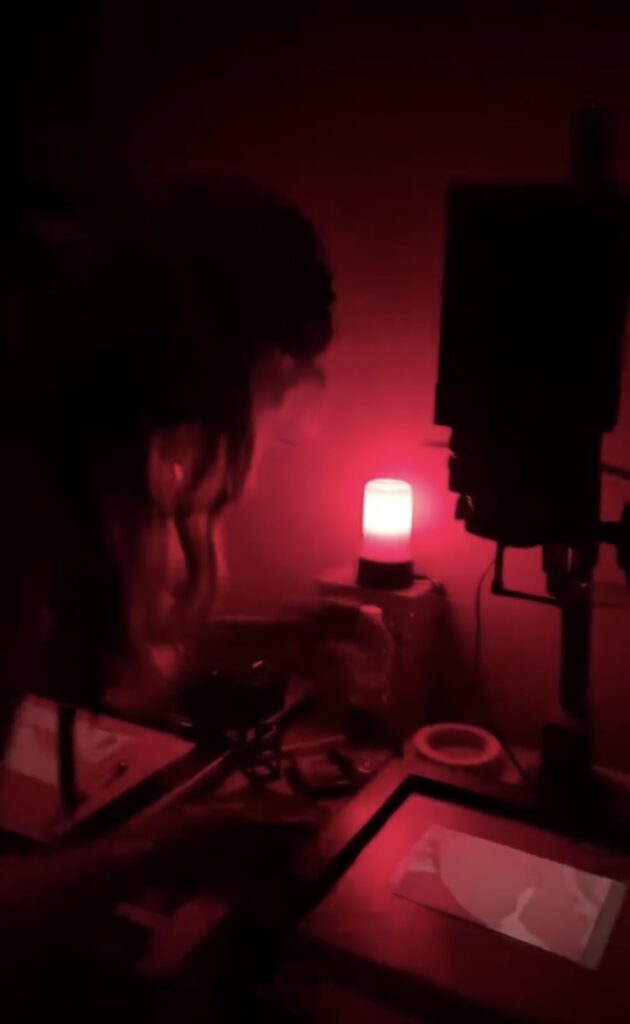
To see it ‘normal’ we reach to the following process: the moment when we enlarge and print the image in the darkroom (yes, this is the typical moment of the red light), the moment when the image is developed on the paper thanks to the developer bath.
This process is wonderful, firstly because of its laboriousness, where you touch things with your hands: adjusting instruments, testing liquids, using the magnifying glass to see if the image is in focus, test strips to find the ‘first black’, etc. Secondly, because it does look like magic.
But, above all, because this is where the work is most similar to digital development. Interestingly enough, similar techniques are used to adjust similar things: contrast filters, masks, bleaching, Bleach Bypass, double exposures etc.
In analogue photography this darkroom work is considered part of the process of creating the final image, inherent to the technique and art of photography.
Part of the ‘style’ and consistency is achieved by the choice of film, as each has its own qualities of colour, grain, contrast etc. that unify the series of images.
For example, I took these photographs with Harman Phoenix 200 film, and you can immediately see that they have the same ‘style’, with characteristic colour reproduction and high contrast:
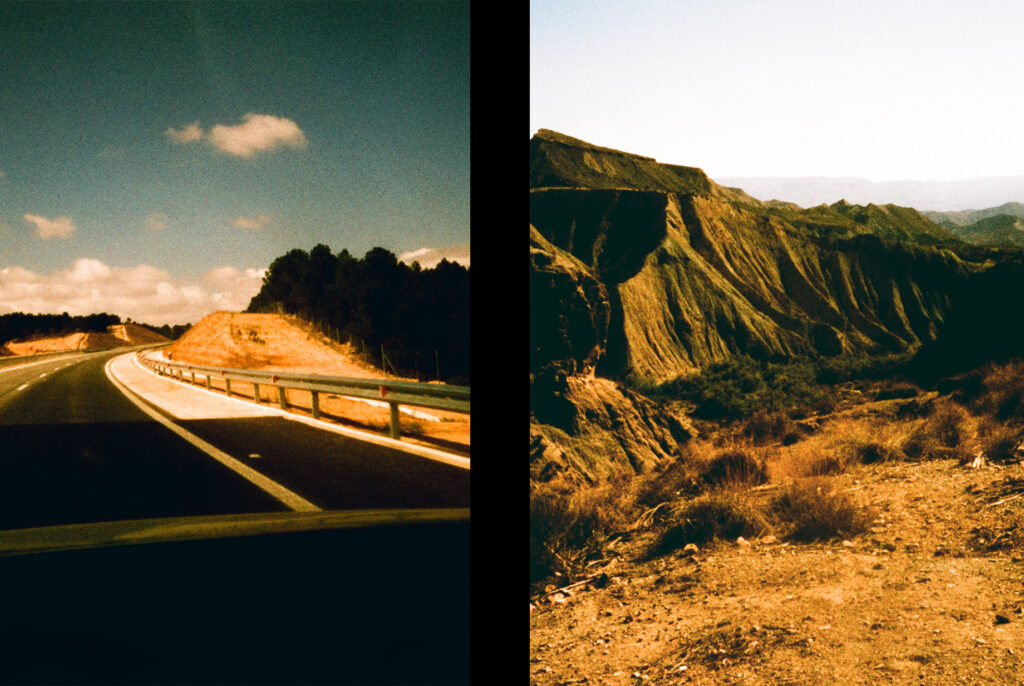
The ‘adjustment’ of the photograph to evoke what is desired was already present in its origins. The possibilities could also be extended to much more experimental and creative practices.
THE MAGIC OF EDITING THE IMAGE IN DIGITAL
In digital photography since the mid-1980s what captures the light in the camera (and thus the image) is the sensor (no longer by silver salts but by photodiodes).
OK, yes, it doesn’t sound as magical to talk about photodiodes as it does about silver salts. But let’s go on.
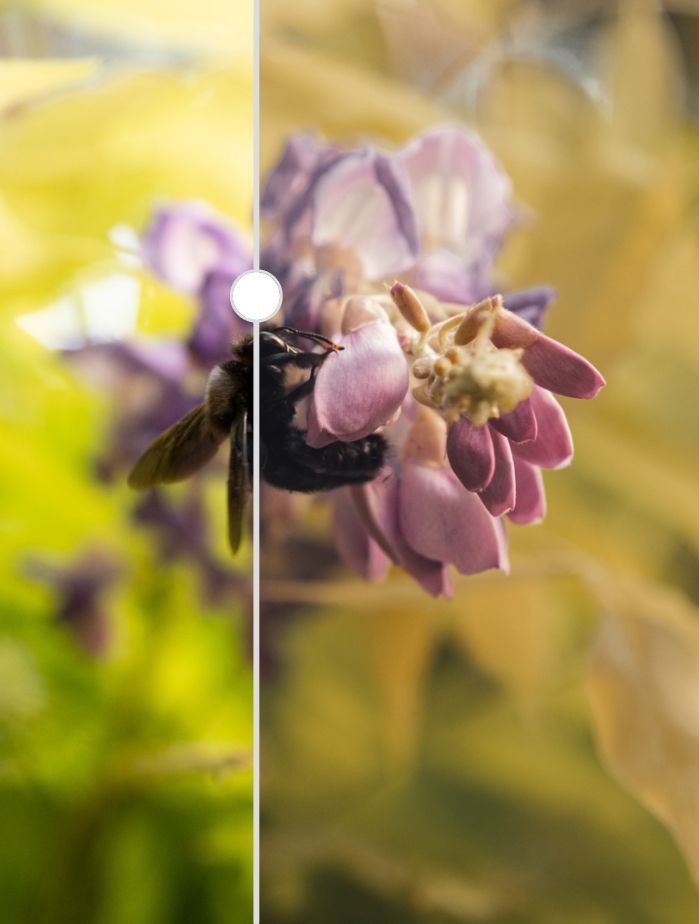
The camera composes a raw digital image (RAW format) that contains all the information that we can get to work with, to achieve the result we are looking for.
-Note: the cameras also offer the possibility of directly generating a processed photograph in .jpg, but this means that the camera makes adjustments and discards information (i.e. it makes decisions instead of us).
With this raw image, we pass it to the computer to edit it. And you might be thinking: yeah, but I’ve already seen the image in the camera just after shooting it. That’s right, that’s because nowadays cameras offer an instant preview even if you shoot raw.
Well, we’ve lost a bit of magic again, but hey, we’ve gained immediacy (which it must be said, sometimes it’s frustrating not to see what the picture looks like until days, or months later).
But there is something we haven’t lost, and that is that the image comes out of the camera as pure potentiality: now it’s up to you to make the most of it. A world of interpretative possibilities opens up for you, so that the photo can be and transmit what you are looking for.
It also contains information that may not be visible in the shot when it comes out of the camera, but that you can make visible thanks to post-processing techniques. This is very evident in astrophotography, where many colours and elements of the sky do not appear until the image has been properly edited.
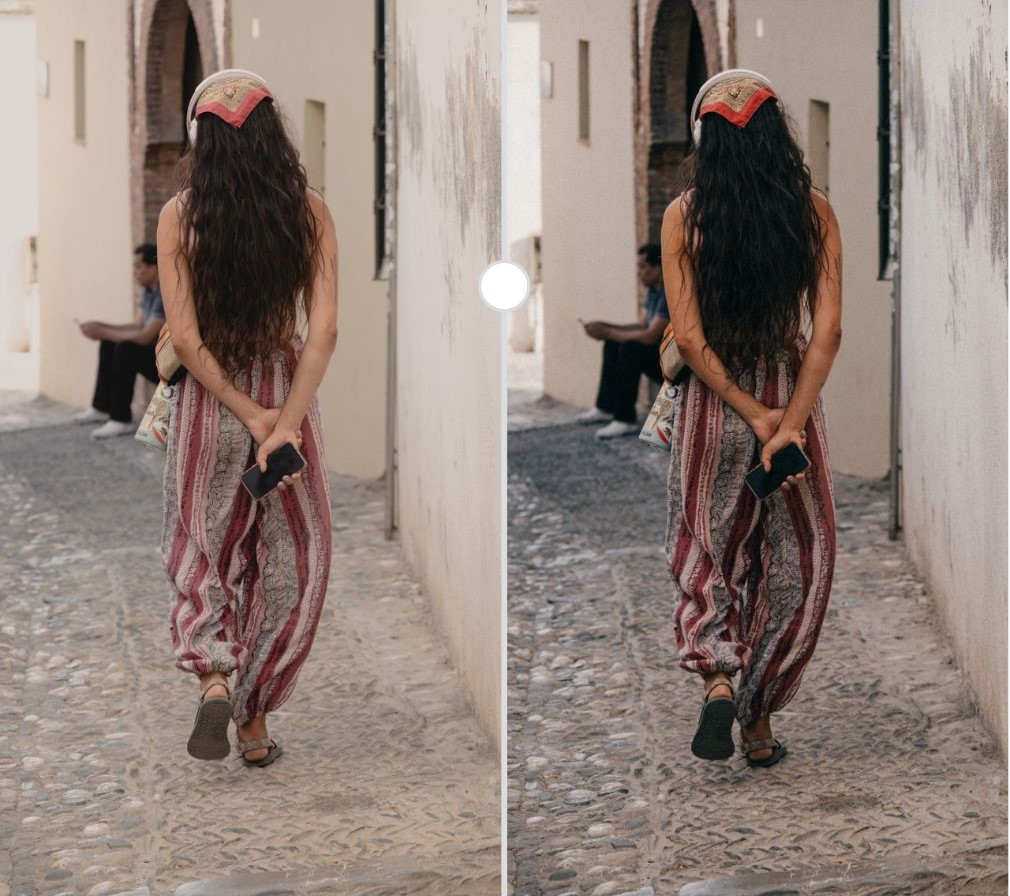
EVOKING SENSATIONS WITH IMAGES
Let’s go back to the initial question, about those images that make you feel an atmosphere, perceive the taste of a dish or transport you to a sense of well-being.
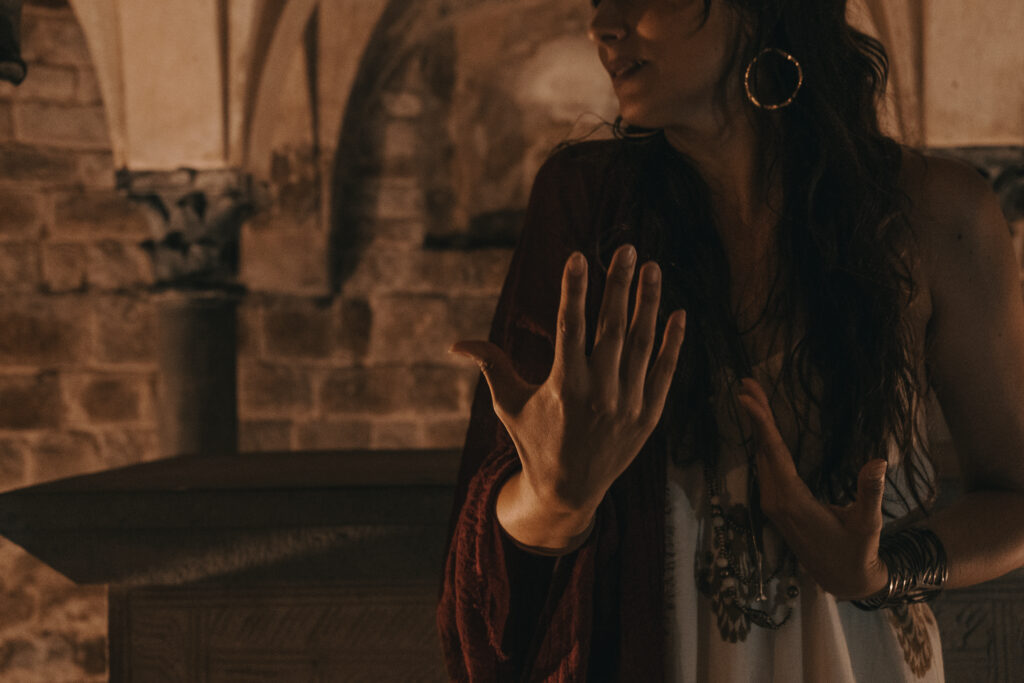
Well, the visual pleasure you feel when you see that image and not another very similar one, has to do, among other things, with the way they are treated during the editing process we have discussed.
The post-processing can be negligible or more complex, depending on the desired result.
By working with light and colour you can make an image reflect harmony or the opposite.
By relating these parameters to your project, by extension, you can make it be perceived as natural or disruptive, innovative or classic, etc.
Now tell me: did you know the importance and possibilities of photographic development? Do you already apply it to your project?
I’ll tell you more here, but if you don’t want to wait, write me and I’ll tell you how we can apply it to your brand:

